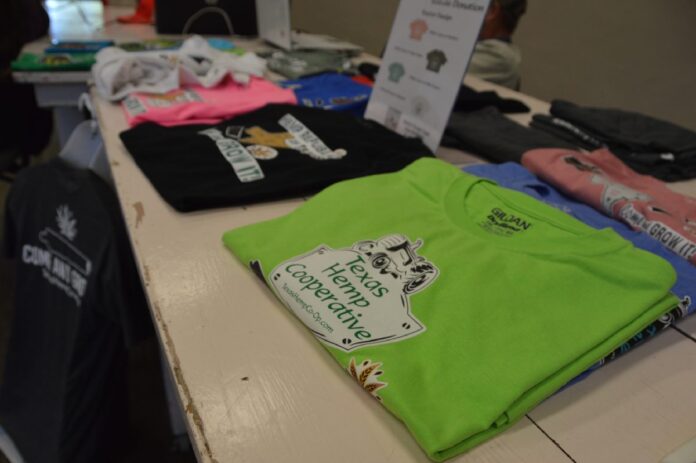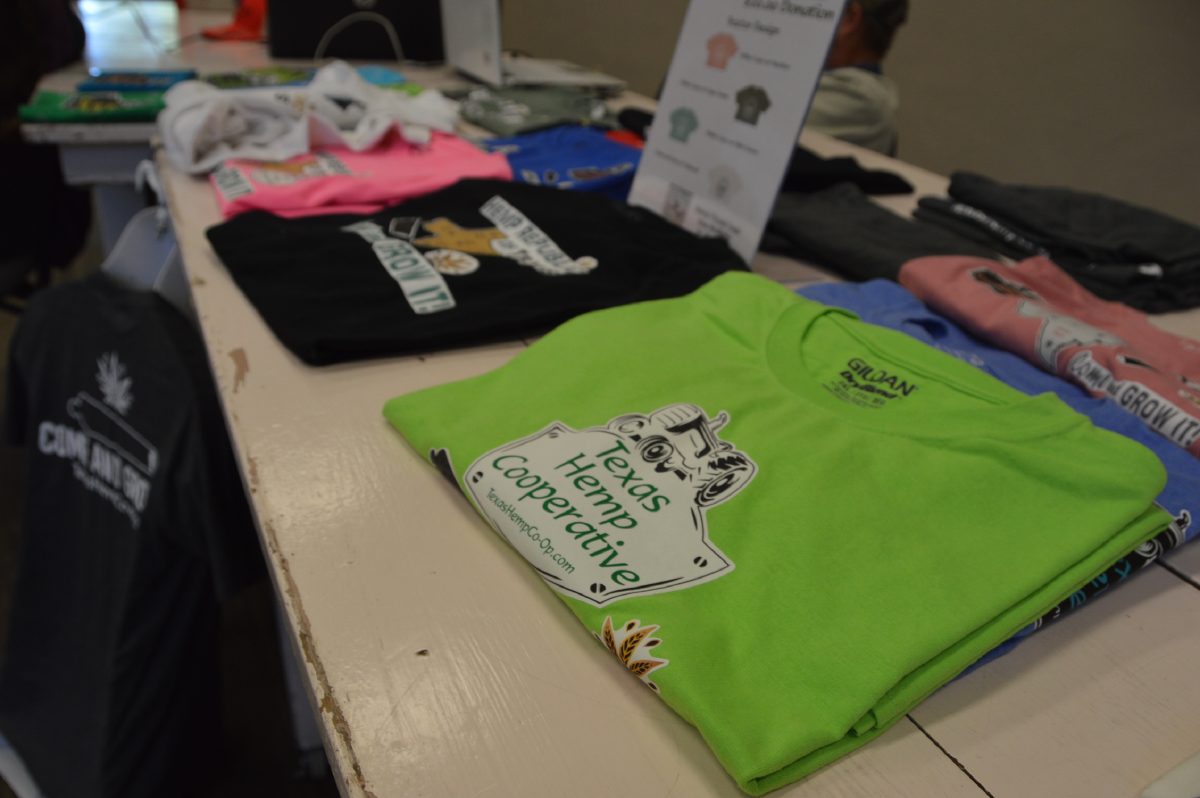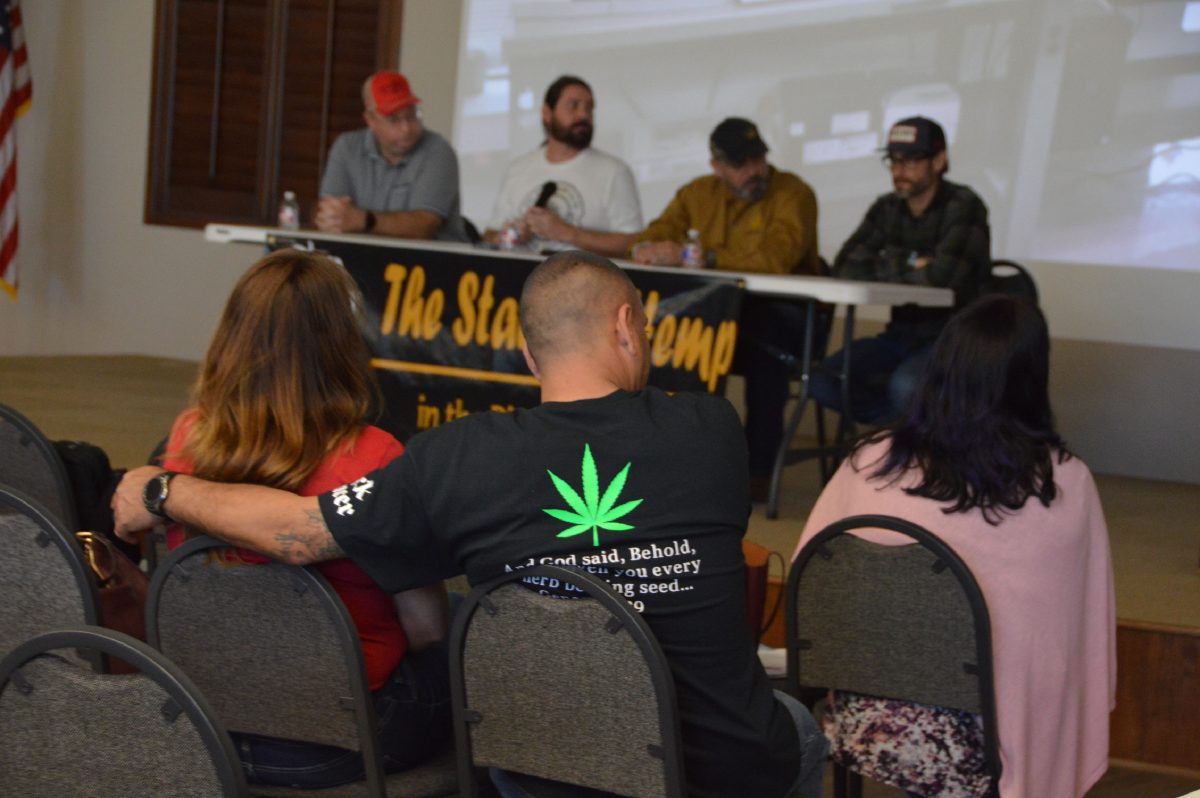MONTE ALTO — Farmers in boots and cowboy hats rubbed shoulders with CBD enthusiasts clad in shirts emblazoned with marijuana-like leaves at Rio Farms in Monte Alto Saturday afternoon to discuss hemp, a crop that will likely be seen swaying in fields across Texas and the Rio Grande Valley in the very near future.
A relative of marijuana that does not produce a high, hemp was illegal until the 2018 U.S. Farm Bill paved the way for states to legalize its production. Texas Agriculture Commissioner Sid Miller submitted an outline of requirements for hemp production to the USDA in early December; when it’s approved, Texas can begin issuing licenses for industrial hemp production, potentially as soon as February.
“Once we get that, then everyone’s gonna grow,” said Rudy Montes, founder of the South Texas Hemp Cooperative and organizer of the hemp convention in Monte Alto.
Traditionally, hemp has been grown for use in a variety of industrial goods like textiles, papers and fabrics, but hemp can also be used to make CBD oil, and the burgeoning market for that oil has made the plant a potentially lucrative cash crop.
“We see the industry here in the RGV as very, way, behind, just because the filtration of information has not reached all the way down here,” Montes said. “I’ve been traveling all around the state of Texas, and I see that the farmers I meet north of San Antonio have usually gotten some kind of education, or seen information on the news or on the internet about hemp.”
Experts in the field who have worked in the hemp industry in other states discussed how to grow, sell and process hemp in lectures that covered everything from the molecular makeup of the plant to the macroeconomic impact of the crop.
“Here in the RGV, we feel like we’re looking at an 80/20 split,” Montes said. “We’re looking at 80% doing industrial; you know, textiles coming out of the crop — rope, fabric bioplastics, biofuel, hempcrete would be able to come out of that. The other 20% is going to be your cannabinoids growing indoor grows, hoop houses or small acreage, anywhere between 5 acres to 10 acres max.”
Montes says that once hemp is legalized, he believes it could have a large economic impact on the region. Although he remained vague on some of the specific details of the industry’s future in the Valley, he referenced cross border trade, local automotive manufacturing and the port in Harlingen as factors in its potential success.
“There’s a lot of things coming to the RGV,” he said. “The area down here is going to be back on the map with people looking at this area for other companies that are coming in to provide more jobs and more education.”
According to Montes, that market has the potential to create a new revenue stream for Valley entrepreneurs courageous enough to dive into the business.
“Some people want a change in their life. Some people are scared of changes. Some people just want to keep it simple. Other people are like, ‘Well, let’s make a little more money on this,’” Montes said.
One of those prospective pioneers of hemp is Travis Burns, a yoga instructor from Los Fresnos who attended the meeting and plans to get into the hemp game on a smaller scale.
“Definitely more on the CBD product side, towards a little more hands-on rather than the industrial side,” he said.
Burns says the meeting helped him make contacts in a field that has little infrastructure in Texas.
“The contacts are nice, you know, because you want to get your nose in and create a good product, and having people say ‘We’re here to sell it for you, we’re here to dry it for you,’ that’s extremely useful,” he said.
According to Montes, hemp entrepreneurs like Burns will only succeed if they’re well prepared and well educated.
“Here’s the problem: not everybody knows what they’re getting into. They’re just gonna jump into it,” he said. “We want to make sure the farmers are understanding the obstacles they’re going to face when they start moving forward and growing hemp.”
Brownsville resident Trace Miller, who ranches throughout South Texas, said the amount of obstacles discussed in the meeting discouraged him from getting into the hemp business.
“A lot of people have been talking to us about growing on our ranch because we’ve got sandy soil, we’ve got watermelon country, which is ideal for this, and we have our own water, so we have everything that would make it ideal,” he said.
Despite that, Miller says, a number of factors have given him pause when it comes to hemp, including labor intensive manufacturing requirements, the fact that only a small portion of South Texas hemp is expected to go toward the lucrative oil market and government regulations that could make hemp a financially dubious proposition.
“This is a really risky product to farm, in my opinion it is. A lot of people are jumping in it like the ostrich business or the gold rush, and everybody’s all excited about it, but the problem is you have a high risk of losing everything,” Miller said.
Miller said he’s most concerned about a requirement that stipulates hemp must contain less than 0.3% tetrahydrocannabinol (THC), the ingredient in marijuana that creates a high. THC levels can be affected by environmental conditions.
“If for any reason your THC gets jacked up, which is by no control of yours, either by the water being too much or too little, then you’ve lost your entire crop and there’s no insurance,” Miller said.
Although Miller isn’t completely ruling out entering the hemp business, he says he’ll be collecting more information before embracing the new crop.
“This is a risky business. My luck to all these people here; until the state loosens up some laws, any growers are going to be fighting for a certain amount, especially down here,” he said. “I honestly would not bet the farm on this.”






